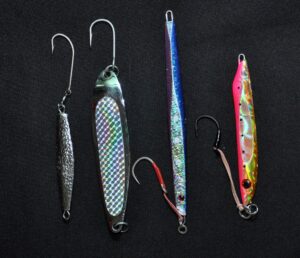10 educational aspects and tips to encourage children to sport fishing
If we want to go fishing with children, as a family , it is essential that they feel interest in the activity, if not, it will be a short day that will end as soon as the little angel is bored. For this, if we are fishing lovers , perhaps the best thing is to like the little ones, so that, sharing tastes, we can all go out together and enjoy the activity, nature and a good time in the best company.
Create interest
If you want to go fishing with children as a family, it will be necessary, first of all, that you create that interest we are talking about . This can be accomplished in many ways, as long as they are attractive and age appropriate resources.
Of course, a good conversation on the subject is essential. It should be explained what the activity consists of, what are its direct and direct benefits at the individual level as well as at the general level, making them aware of how consumer fishing works and others . Also speaking with other family members in a clearly bidirectional way will make him interested in the conversation.
Other resources to deal with the subject are stories, toys, songs, photos , a help with your studies on the subject, a visit to the supermarket or the fish market, a cooking session on seafood … As we say, it depends on the evolutionary moment of the child, from his previous knowledge, etc.
Training
This interest should not be based only on fun promises, but should include, on the other hand, some training, that is, the child must know what he is going to see (and do) and how it is carried out.
To do this, you must know the climates, the characteristics of the waters and the fish , what they eat, also what elements make up a fishing equipment, how they are used, what they are for …
Values and responsibilities
An important part of this training is the knowledge that the child obtains in values. Like any new well-taught activity, fishing will be perfect to let you know more about the environment and its care , about endangered species, about water pollution, about the sustainability of species …
It is important that you know how the world of fishing is completely , both good and less good. Of course, it is up to you to show him the catch and release activity to respect the specimen, fishing to feed us or as a simple leisure activity.
Another important point regarding this is that you know that going fishing also has certain responsibilities such as collecting, cleaning the gear, maintaining it, replacing it, keeping it , following the premises of the activity itself …
Experimentation
Of course, an important incentive to go fishing with children interested in the activity is that you let them participate in it . On many occasions, words are already a sufficient resource to get a little interest. Explaining what it is and telling some anecdotes can work.
However, that only works in the short term. If we want the interest to be constant and growing, children need to experiment . Let them touch the parts, teach them how the reel works by doing it yourself, show them carefully, how the fish might not be able to escape the hook, let it assemble a pluggable rod.
Age-appropriate supplies and supplies
In addition to being dangerous, the fact that they do not have on hand age-appropriate elements will make that attempt to enter your child in this fascinating world have a completely opposite result.
For this, once you know more about fish, how to catch them and the necessary elements, it would be interesting if you offered some of them according to their age and, therefore, their abilities and physical characteristics.
Rods, vests and small caps, child seats, hand nets or fishing kit to catch the fish once you have attracted them very close to you, ultralight reels … There are many fishing elements that will facilitate the inclusion of the smallest in this aspect.
Your contribution
Having a good foundation on the subject, let him contribute to the activity. You can have ideas, many questions, perform certain tasks …
The interest is greater both for living the activity closely and for feeling valued and able to carry out activities carried out by their parents (or other family members).
Decisions
Remarkable regarding this contribution is decision making. If you have correctly taught your child what the activity consists of, you should not have to make inappropriate decisions and if any are not fruitful we will have the perfect time to explain what the mistake has been and give him some alternatives.
Of course, those decisions must be partially conditioned, giving as options to choose those options that are logical, safe and respectful . Be that as it may, the little one must feel that he has a voice and a vote in the activity, if not, it is easy for him to prefer not to be part of it.



